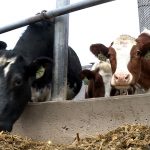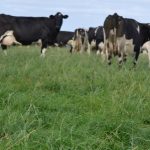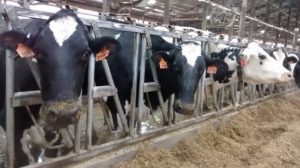
The report estimates the state’s total net farm income, representing earnings paid to farmers after subtracting their expenses, dropped 27 percent to $902 million in 2018. Farm cash receipts, estimated at $7.18 billion for the year, held relatively flat.
UI Extension agricultural economists Ben Eborn and Garth Taylor prepared the report for the 16th year, based on USDA estimates and interviews with farmers and suppliers of farm production inputs. They presented their findings Thursday to the state’s Joint Finance-Appropriations Committee and will soon make presentations to the Legislature’s agricultural committees.
“Our (state’s) economy is heavily dependent on agriculture,” Eborn said. “When agriculture is down, it can hurt the state economy.”
Eborn said Idaho’s net farm income has continued on a prolonged downward spiral and also dropped about 27 percent in 2017 from the prior year.
“It’s the fifth year that’s declined in net farm income. It’s pretty rough,” Eborn said. “Farmers are making 40 percent of what they were making in 2011. There’s low prices for everything.”
Cash receipts have mostly increased for Idaho’s major crops: the economists estimated hay receipts rose 26 percent, wheat rose 16 percent and barley and sugar beet payments were both up 3 percent. Receipts for potatoes were down by 4 percent.
“Hay was one of the bright spots,” Eborn said. “The hay crop was good production, good prices, and they stayed consistent for premium hay.”
Livestock, however, represents the majority of Idaho’s farm economy — with dairy responsible for 33 percent of the state’s agricultural receipts, and cattle and calves bringing in 23 percent of the total farm revenue, according to UI.
While agricultural revenue has held flat, farm expenses have risen significantly.
For 2018, Eborn and Taylor calculated contract labor costs were up 4 percent, hired labor was up 6 percent, fuel prices were up 18 percent, interest expenses were up 18 percent and fertilizer and chemicals were up 4 percent.
Dairy farmers have struggled the most recently. Fifteen Idaho dairies went out of business during 2018, including an extremely large dairy in Jerome, according to the Idaho Dairymen’s Association.
Eborn said milk has sold for below break-even prices for three consecutive years. He said milk prices haven’t traditionally remained at or below break-even rates for more than a year. Eborn explained the largest dairies have too much invested in their operations to scale back when prices drop. As a result of the industry’s failure to quickly adjust supply to meet demand, Eborn said Idaho dairies have produced beyond the state’s processing capacity.
Alan Andersen, who is an owner of medium-sized dairies in Declo and American Falls, said low beef prices have also hurt dairies. With the price of cull cows at less than 40 cents per pound — about half the usual rate —Andersen said dairymen have avoided slaughtering surplus dairy cows to keep their output in check.
“It’s the production beyond the processing capacity in Idaho that’s the biggest problem we have now,” Andersen said.
Though foreign trade has remained strong, Andersen believes recently enacted trade tariffs have limited opportunities for Idaho farmers to find relief through exports.
Andersen has found a niche in his operation to help weather tough times, offering high-end dairy cow genetics to help others improve herd performance. He knows of other dairies that have carved niches by making their own cheese or bottling their own milk.
“It’s a real thing that it’s a difficult time, and I don’t see that changing any time soon,” Andersen said.
Eborn believes most Idaho farmers still have decent debt levels compared with their equity, based on farmland values that have continued to increase.
“If that ever turned around, we’d be in a world of hurt,” Eborn said.
In the meantime, Eborn said Idaho farmers have started rolling over their operating loans, and interest rates are rising.

























